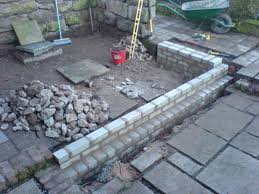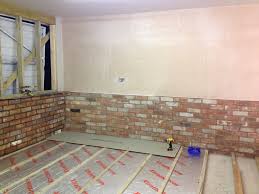Garage Conversions - Part One← Back
Posted 8 Years, 2 Months, 2 Weeks, 3 Days, 23 Hours, 50 Minutes ago.
A great way to create more space in your home when moving isn't an option.
As the housing market slows again, you may feel stuck not knowing which way to turn to get more space.
Many people have a garage space that is wasted and used for piling junk that doesn't even get looked at from one year to the next....so why not use that space?
With your home being your most valuable asset, it is so important that proper planning goes into any work that is carried out on it. We are offering you this guide to lead you on the right path with regard to Building Regulations and not instead of the need to seek professional advice, which of course we are here to help with.
If your garage is of brick or block build then it is most probably suitable for conversion.
You need to think about whether there are any known problems such as damp, cracks or leaks and indeed if their may be contamination from petrol or oil that has leaked from motor vehicles kept inside.
Also you will need to consider the access to the conversion. Do you already have an access door and if not is there space to put one?
If you convert your garage will you have enough space for parking outside and are you able to discard of or store the items in there elsewhere?
The other thing that you need to consider is the use of the conversion space and does your garage area offer the room for what you want to achieve.
There are also more technical issues that need to be addressed with a garage conversion which is where suitable professional advice needs to be seeked before you begin the project.
Infilling the garage door will obviously be an important factor, particularly as it tends to be the most visible part of the conversion. Some garages have a support that runs the length of the opening which can in turn be used to support your infill, but this isn't always the case. The only way to tell is by digging a hole to find out!
 If it is found that there is no support foundation then you have two options:
If it is found that there is no support foundation then you have two options:
Either : Dig a fondation 1m deep or to the same depth as the foundations to the existing garage. Get this inspected before filling with concrete!
Or : If the width is the same as a single garage door you can install 2 x 150mm deep concrete lintels across the opening, supported by the existing foundations.
Once the foundations are set, you can begin the in-filling. This can be done with brickwork, to match your house, and a window. Most will reduce the width of the opening as a full width window will look out of proportion. To help prevent damp,  it is recommended that the window be double-glazed and that you also insulate with a cavity wall.
it is recommended that the window be double-glazed and that you also insulate with a cavity wall.
There is another option that can be used which can be useful if you think in the future that you or someone who may purchase your property will wish to convert the space back to a garage. It also has the advantage of being quick and cheap. This is to use a lightweight timber framed panel with a weatherproof external surface and insulation.
Whichever way you decide to do it, it is paramount that the infill panel is weatherproof and insulated. Also, ensure that the new materials are in-keeping with yours and surrounding properties.
This topic will continue in another part, but if you need help with your conversion, then please get in touch with us. We have 'the man with the plan'.
architectural designer building regulations convert extension foundations garage conversion more space
 it is recommended that the window be double-glazed and that you also insulate with a cavity wall.
it is recommended that the window be double-glazed and that you also insulate with a cavity wall.